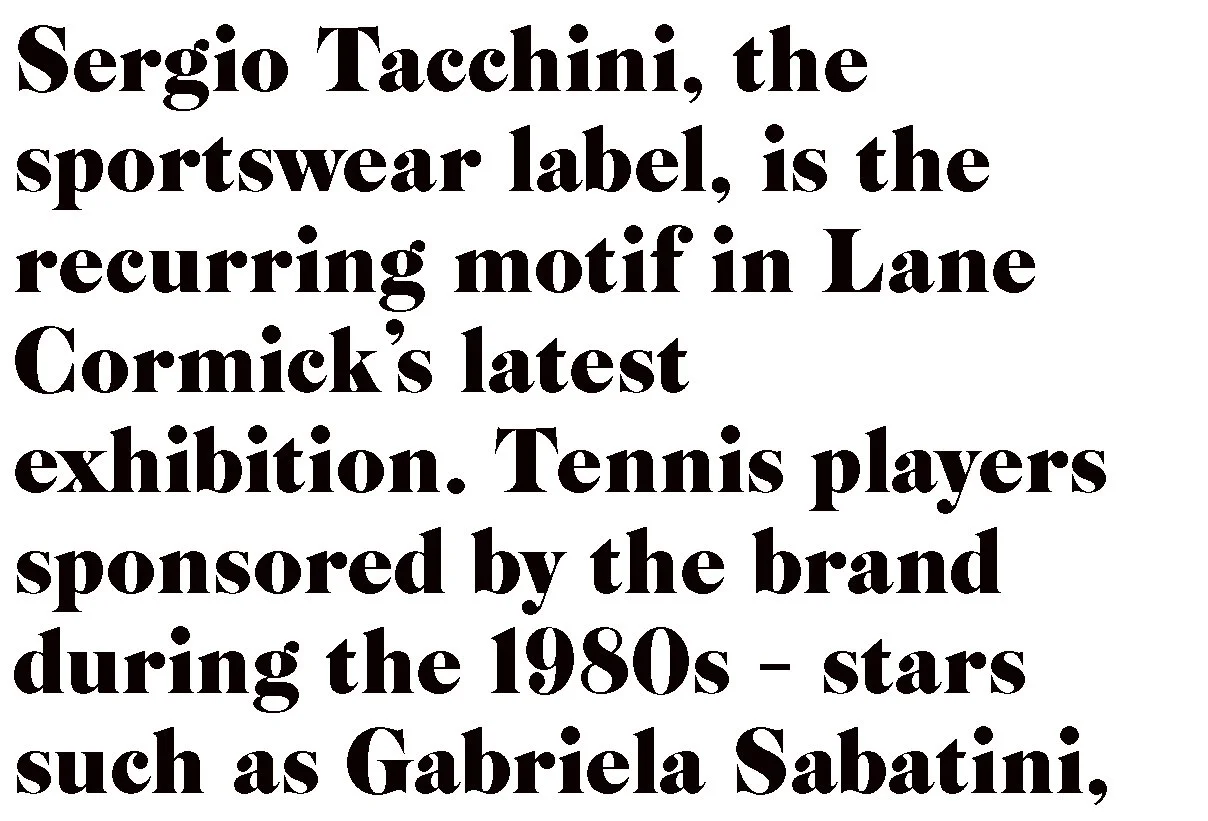Lane Cormick, catalogue essay by Michael Ascroft, 2018
Sergio Tacchini, the sportswear label, is the recurring motif in Lane Cormick’s latest exhibition. Tennis players sponsored by the brand during the 1980s – stars such as Gabriela Sabatini, Vitas Gerulaitis and Goran Ivanišević – feature as a series of black and white photographic prints on transparency. Tacchini clothing (with brand obscured) also appears in pictures of passengers on public transport and on professional skiers. Most of the images have been found via Internet searches. These searches have gone on tangents as well: there is a hillside view of the port of Khasab in Oman and the port of Fécamp in France, both places connected to the racing yacht Sergio Tacchini. The collection of images conjures a world of distraction, idle wealth and vacant pleasure.
Two of the works use images of decorated, collaged pages from a journal that feature Ivanišević, made by Lane’s friend Michelle Mantsio, when she was a tennis-obsessed teenager. This chance connection is important. Cormick’s work here is restrained but it still shares something of the scrapbook-like, obsessive interest in the handling of the images – only one adjusted to the routines and idiom of high, esoteric art. Each work has been decorated with daubs of paint, applied by thumb. The position of the daubs varies apparently randomly, but they have been guided by arrangements of dots made by fixing acetate chad to sheets of paper at regular intervals. This minimal embellishment occurs as an abstract process of manipulation but is actually carried out in the deliberately basic manner, typical of Cormick’s practice.
The exhibition is dominated by the white-painted room, the surface gleam, the intimidating glamour of the figures and the nostalgia that is called up by the black and white images. And yet in the background, in the processes of creating the works, there is something as important as those solicitous effects. In setting these images down, something had to happen, and what that is is never simply about technique. It is made in its own private world, in which material processes of experimentation and labour are mnemonic devices. Alongside the Sergio Tacchini prints are two large wooden vitrines painted in Mission Brown, which contain a grey powder. This is dust remaining from statues of the Virgin Mary, pulverised by an electric grinder. In Cormick’s work, sometimes the crudest process of manipulation is the best means of reaching out to the ineffable.

